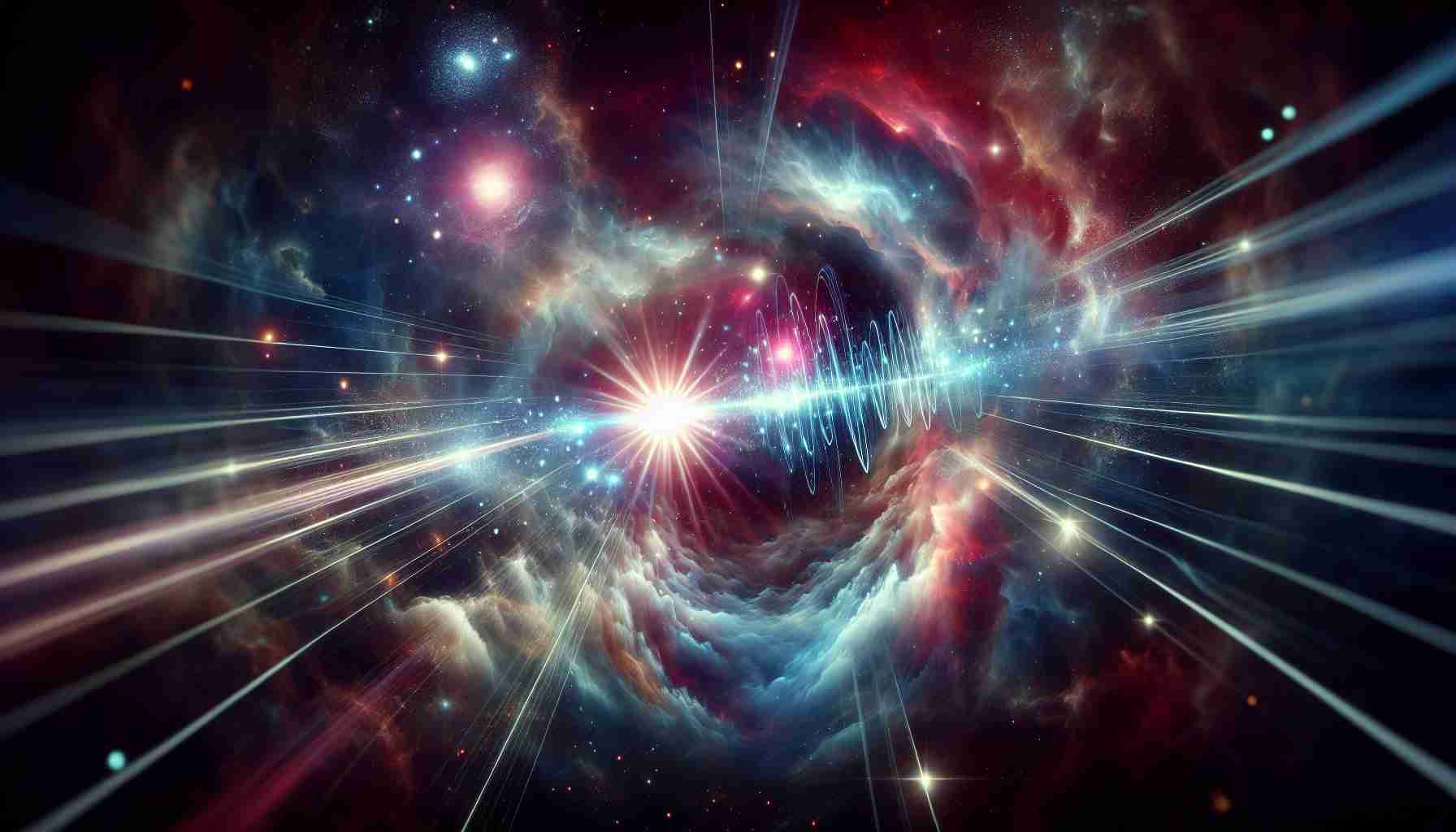MIT Identifies Source of Mysterious Radio Burst
In a groundbreaking discovery, scientists from the Massachusetts Institute of Technology (MIT) pinpointed the origin of a fast radio burst (FRB) named FRB 20221022A. This burst emerged from a region in close proximity to a rotating neutron star.
Fast radio bursts are transient phenomena characterized by brief, intense emissions of radio waves generated by extremely compact celestial bodies, such as neutron stars and potentially black holes. Since the first FRB was identified in 2007, thousands of similar bursts have been cataloged, illuminating regions across the universe, some up to 8 billion light-years away.
FRBs only last a millisecond but can emit energy that momentarily surpasses entire galaxies. Despite ongoing research, the mechanisms behind these radio emissions have remained largely elusive. However, MIT’s recent findings, published in the prestigious journal Nature, shed light on this cosmic mystery.
Dr. Kenzie Nimmo, who led the study, explained the environment surrounding neutron stars involves extreme magnetic fields. In these areas, conventional atoms cannot exist; they are disintegrated by the immense magnetic forces. The study revealed that the energy contained within these magnetic fields is capable of morphing and ultimately producing the observable radio waves.
Crucially, the research indicates that this particular FRB likely originated from the neutron star’s magnetosphere, a highly magnetized region surrounding the stellar object. This revelation marks a significant step forward in understanding the origins of fast radio bursts in the cosmos.
Unlocking the Secrets of the Universe: How MIT Identified the Source of a Mysterious Radio Burst
The identification of the source of fast radio bursts (FRBs) is a hot topic in astrophysical research. Recently, scientists from the Massachusetts Institute of Technology (MIT) made a pivotal breakthrough by localizing FRB 20221022A, a burst that emanated near a rotating neutron star. This discovery not only adds to our understanding of these enigmatic phenomena but also opens new avenues for future research.
Understanding Fast Radio Bursts
Fast radio bursts are intense bursts of radio waves that last for just a fraction of a second but can release energy equivalent to that of millions of suns. First detected in 2007, FRBs have intrigued astronomers and astrophysicists alike due to their mysterious origins and the extreme environments from which they emerge.
Features and Specifications of Fast Radio Bursts
– Duration: Typically less than a millisecond.
– Energy Output: Can equal or exceed that of entire galaxies.
– Distance: Some bursts have been traced back to over 8 billion light-years away.
Mechanisms Behind the Emission
The research led by Dr. Kenzie Nimmo reveals the complex interplay of extreme magnetic fields around neutron stars, where traditional atoms cannot survive and are disintegrated. It is within these magnetic environments that the energy culminates to create the radio emissions detected from Earth. The research highlights that the energy transformations occurring in the magnetosphere of neutron stars are crucial for understanding these emissions.
How FRBs Are Studied
Research on FRBs often involves:
– Telescopes: Utilizing radio telescopes to capture and analyze bursts of radio waves.
– Computer Models: Employing simulations to understand underlying astrophysical processes.
– Multi-wavelength Observations: Complementing radio observations with data from optical and X-ray telescopes to gain a holistic view.
Research Impact and Future Directions
This milestone study published in the journal Nature not only elucidates the origins of FRBs but also impacts several fields, including cosmology, particle physics, and gravitational physics. Future research may focus on:
– Improving Detection Methods: Enhancing the sensitivity and resolution of telescopes.
– Understanding Other Celestial Phenomena: Examining the connection between FRBs and other cosmic events, such as gamma-ray bursts.
– Exploring Neutron Star Characteristics: Further investigation into the nature of neutron stars and their magnetic fields.
Challenges and Limitations
Despite this advancement, FRBs present significant challenges:
– Transient Nature: The fleeting duration of FRBs makes them difficult to study.
– Distance and Localization: Many bursts are sourced from extreme distances in the universe, complicating localization efforts.
– Unknown Mechanisms: The exact mechanisms generating FRBs remain largely theoretical, necessitating continued research.
Market Analysis and Trends
As interest in astrophysics grows, funding and investment in research related to FRBs and neutron stars have increased. Organizations and institutes globally are collaborating to analyze these phenomena, citing their potential implications for our understanding of the universe.
Conclusion
MIT’s discovery marks a significant leap toward unraveling the complexities of fast radio bursts. As researchers continue to investigate the interplay of magnetic fields and neutron stars, the potential for groundbreaking insights into the nature of our universe expands. For those fascinated by astrophysics and cosmic mysteries, keeping abreast of developments in FRB research is crucial.
For more information about ongoing research in astrophysics, visit Nature for the latest studies and findings.














